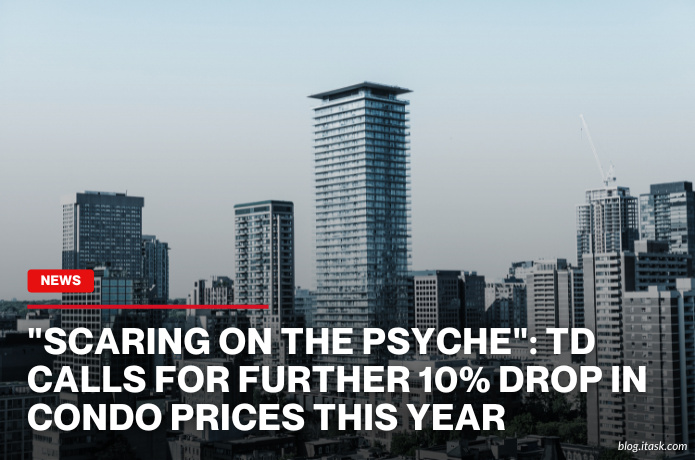"Scaring On The Psyche": TD Calls For Further 10% Drop In Condo Prices This Year
"Scaring On The Psyche": TD Calls For Further 10% Drop In Condo Prices This Year

TD Economics says condo prices in the Greater Toronto Area (GTA) could fall another 10 per cent this year, on top of recent declines. That would put values down a total of 15–20 per cent from their mid‑2023 high, casting a shadow over a market already in correction mode.
The analysts at TD point to three main culprits. First, demand has dropped sharply. With a slowdown in immigration, rising interest rates, and shaky global trade, fewer people are looking to buy. At the same time, new condo completions remain high, adding to already inflated supply.
Investor interest, once a strong pillar of the condo market, has also weakened. High borrowing costs, rising condo fees, and falling rents mean many investors no longer see a positive cash flow. One Reddit commenter summed it up:
“Even if a condo drops 10%, any investors looking to buy still won't make money. Cash flow negative.”
Economic worries are another factor. Trade uncertainty has made households cautious. Plus, some sectors of the job market are getting hit, with unemployment forecast to rise. That kind of background makes big purchases like condos less appealing.
On the supply side, the GTA is swimming in listings. Roughly 40,000 condo units are unsold, including newly built and resale units. At current sales rates, it would take over four years to clear the backlog—well above the typical 14–16 months.
With so much supply and muted demand, downward pressure on prices is almost inevitable.
That said, TD sees a glimmer of hope in 2026. They expect the Bank of Canada to cut rates by about 0.50 per cent, easing mortgage stress. Lower interest costs, improved economic sentiment, and reduced completions could bring some balance. Government plans like GST relief for first‑time buyers could also help—but their effect will be gradual.
In the meantime, the GTA condo market is entering a tough chapter. Buyers and sellers alike may have to adjust expectations, while investors step back and homebuyers wait for clearer signs of recovery. Deep losses aren’t out of the question—but on the flip side, a slower pace of decline might pave the way for a steadier market ahead.
